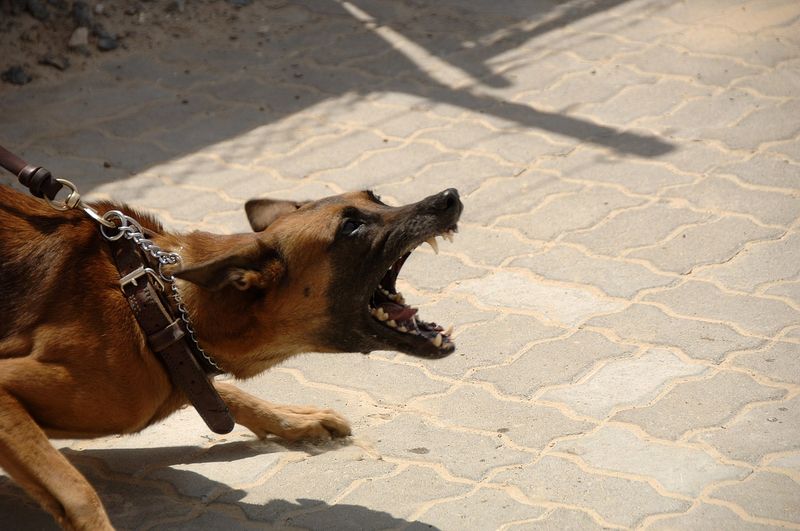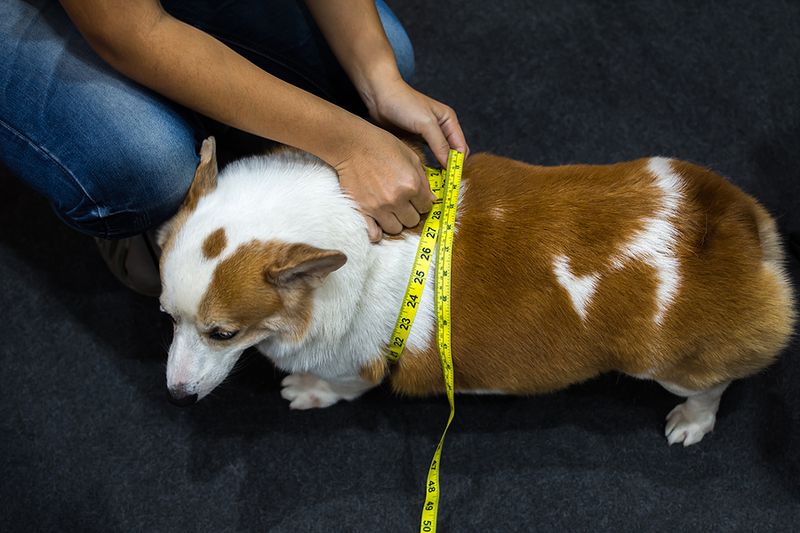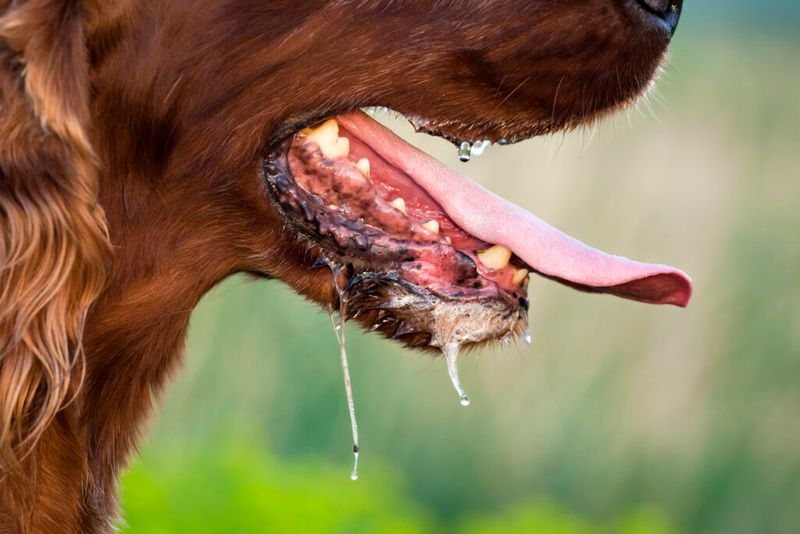As a dog owner, recognizing the signs of an unhappy dog is crucial to ensuring their well-being. Dogs express their emotions differently, and understanding these cues allows for a closer bond with your furry friend. Here are 15 signs that your dog might be unhappy, and what you can do to help.
Loss of Appetite
When your dog turns its nose up at food, it might be more than just being picky. A loss of appetite can indicate stress or discomfort. Perhaps your dog feels under the weather, or maybe something in its environment is unsettling. Watch for additional signs like lethargy or upset stomach. Consulting with a vet can provide insights into any underlying health issues. Sometimes, altering the diet or feeding schedule can reignite interest in mealtime. Consider whether recent changes at home might be affecting your dog’s appetite.
Excessive Grooming
Have you noticed your dog licking or biting itself more than usual? Excessive grooming can be a sign of anxiety. This behavior can lead to skin irritation or infections if left unchecked. Look for triggers in your dog’s environment that might cause stress, like loud noises or changes in routine. Sometimes, providing a distraction, such as a new toy, can redirect their focus. Additionally, ensuring regular exercise can help burn off nervous energy.
Changes in Sleeping Patterns
If your dog is suddenly sleeping more or less than usual, it may indicate unhappiness. Dogs, like humans, can experience changes in sleep due to stress or health issues. Watch for other symptoms such as restlessness or changes in behavior. Consider if there have been recent disruptions in their routine or environment. A comfortable sleeping area and consistent daily schedule can help improve their sleep quality. Consulting a vet can also rule out any medical concerns.
Isolation from Family
Dogs are social creatures, so if yours is suddenly spending more time alone, it might be feeling down. Isolation can be a sign of depression or stress. Pay attention to when and where your dog chooses to be alone. This information can help identify potential stressors or discomfort. Encouraging interaction through play or gentle companionship can help ease their loneliness. If this behavior persists, a vet can offer further guidance.
Destructive Behavior
Destructive behavior can be a cry for help from your dog. Chewing furniture or digging holes might indicate boredom or anxiety. Consider whether your dog is getting enough exercise or mental stimulation. Engaging activities, like puzzle toys, can provide an outlet for their energy. Additionally, evaluating your dog’s environment for stressors and spending quality time together can reduce destructive tendencies. Consulting a professional trainer might also be beneficial.
Frequent Whining or Barking
Excessive vocalizations such as whining or barking could signal discomfort or agitation. This behavior might be your dog’s way of communicating that something is wrong. Observe the context in which your dog is most vocal to identify triggers. Altering the environment or routine can sometimes alleviate this stress. Providing comfort and reassurance can also help soothe your pet. If excessive barking persists, seeking advice from a vet or behaviorist may uncover underlying causes.
Lack of Interest in Play
If your dog shows no enthusiasm for play, it might be experiencing stress or depression. Lack of interest in activities they used to love can be concerning. Assess whether there have been changes in routine or environment that might affect your dog. Reintroducing favorite games or trying new activities can sometimes reignite their interest. Spending quality time together can help strengthen your bond and boost their mood. Consulting your vet can provide further insights.
Aggression or Irritability
Changes in temperament, such as increased aggression or irritability, may indicate unhappiness in your dog. Often, this behavior stems from fear, stress, or pain. Identifying triggers, whether they be specific people, pets, or situations, can help manage your dog’s reactions. Consulting a professional trainer can offer strategies for managing aggression. Providing a safe and calm environment will also support your dog’s emotional well-being.
Constant Pacing
Pacing can be a sign of anxiety or discomfort. If your dog is unable to settle, it might be trying to communicate distress. Pay attention to when your dog paces, as this might help identify its source of worry. Providing a secure environment with familiar comforts can ease anxiety. Engaging in calming activities, like gentle exercise or soothing music, can also help. Persistent pacing warrants a conversation with a veterinarian.
Loss of Interest in Favorite People
If your dog is indifferent to people it once adored, it might be feeling unhappy. Emotional stress or physical discomfort can lead to withdrawal from loved ones. Reinforcing positive interactions and giving extra attention can help rekindle your dog’s interest in family members. Ensure their environment is conducive to comfort and security. Consulting with a vet can provide further insight into any underlying issues.
Unusual Vocalizations
Strange vocalizations, such as howling or high-pitched noises, can indicate that your dog is trying to communicate distress. This behavior often reflects underlying stress or discomfort. It is important to observe when these vocalizations occur to identify potential triggers. Providing comfort and addressing environmental factors can help soothe your dog. If these sounds persist, consulting with a veterinarian can help determine if there are any health concerns.
Excessive Panting
While panting is normal for dogs, excessive panting might signal distress or overheating. If your dog pants heavily outside of physical activity, it may be anxious or uncomfortable. Ensure your dog has access to shade and plenty of water, especially in warm weather. Monitoring their behavior can help determine the cause of the panting. If panting persists, particularly in cool conditions, a vet check-up is advisable to rule out health issues.
Avoidance Behavior
Avoidance behavior, such as hiding or avoiding eye contact, suggests fear or anxiety in dogs. This behavior is often a protective mechanism. Creating a safe and secure environment can help your dog feel more at ease. Gradually introducing new experiences with positive reinforcement may also reduce fear. Consulting a professional behaviorist can provide additional strategies to support your dog’s comfort and well-being.
Weight Fluctuations
Changes in weight can indicate an unhappy dog. Whether your dog is losing or gaining weight, stress and anxiety can be underlying factors. Monitoring their diet and ensuring regular exercise can help manage weight. Identifying and eliminating stressors in their environment can also contribute to a happier outlook. If weight fluctuations continue, a veterinarian can provide a comprehensive health assessment to rule out medical issues.
Excessive Drooling
While some drooling is normal, excessive drooling can be a sign of stress or discomfort. It may be triggered by unfamiliar situations or fear. Identifying stressors and providing a calming environment can help reduce drooling. Regular dental checks are also essential to rule out oral health issues. If drooling persists, consulting with a veterinarian is advisable to ensure there are no underlying health concerns.















